Kegel exercises can prevent or control urinary incontinence and other pelvic floor problems. But do you know how to do Kegels properly?
Most women have experienced it at one time or another — the dreaded urinary leak.
Maybe it happened during some vigorous exercise, or while laughing uncontrollably with friends.
No matter where or how it happens, it can be an embarrassing situation, and one that women really don’t like to talk about.
Urinary incontinence is a very common medical diagnosis, and the prevalence increases even more as people age.
It is estimated that over 50% of women in the US suffer from some form of urinary incontinence.
Losing bladder control or having an “accident” is embarrassing, and so many women avoid the topic altogether.
Some people think that incontinence is just a normal part of aging, or that there is no way to treat this problem.
But the truth is, urinary incontinence is a very common issue, and there are a number of treatment options.
Let's look deeper at this issue and learn how to do Kegels properly.
Do you have a low sex drive? Learn what causes low libido in women … and what you can do about it.
Types of Urinary Incontinence
While the exact number is not known, the National Association For Continence estimates that 33 million adults in the U.S. suffer from some form of urinary incontinence.
Urinary incontinence is more prevalent in women, affecting about two times as many women compared to men.
There are several forms of urinary incontinence: stress, urge, mixed, overflow, and incontinence following surgery.
It is important to understand the differences in these types of incontinence in order to determine the best treatment approach.
Stress Incontinence
Stress incontinence occurs when the muscles in the pelvic floor have been weakened or damaged.
This causes urinary leakage during exercise, coughing, sneezing, laughing, or any movement that puts pressure on the bladder.
Urge Incontinence
Many people refer to urge incontinence as an “overactive bladder.”
Those with urge incontinence have a sudden, intense urge to empty their bladder.
They usually cannot get to a restroom in time, which leads to urinary leakage.
Mixed Incontinence
If you have a combination of both stress and urge incontinence, this is considered a mixed form.
Overflow Incontinence
This occurs when the bladder fills beyond what it is capable of holding and urine literally overflows.
It can also be due to not completely emptying the bladder at a previous bathroom session.
Since urine still remains in the bladder, this additional urine may leak out, or the individual may feel that they need to constantly urinate.
Surgery
Incontinence is a common problem after certain operations, such as hysterectomies, cesarean sections, prostatectomies, lower intestinal surgery, or rectal surgery.
Functional Incontinence
This is not true incontinence, in that there is no abnormality in the urinary tract.
However other medical conditions, such as immobility, may cause someone to have issues with making it to the bathroom on time.
Symptoms of Stress Incontinence
Since stress incontinence is the most common form associated with exercise, let's take a look at some ways to treat this nuisance so that you can get back to your workouts worry-free.
The main symptom of urinary incontinence is the unwanted leaking of urine.
Depending on the exact type of incontinence, this may be experienced in different ways.
An individual with stress incontinence will notice urinary leakage when she does any type of activity that puts additional stress on the bladder, such as jumping or even coughing.
What Causes Stress Incontinence
Stress incontinence is due to weak or damaged muscles in the pelvic floor. This is a common issue in women.
Childbirth damages the pelvic muscles, increasing the risk of stress incontinence.
Menopause is another factor. As estrogen levels decrease, the muscles in the pelvic floor become weaker, which can lead to stress incontinence.
Any type of surgery that involves the pelvic floor, such as hysterectomies, rectal surgeries, or lower abdominal surgeries can lead to stress incontinence as well.
Who Is At Risk For Stress Incontinence?
Any postmenopausal woman is at risk for stress incontinence as the lower estrogen levels in the body can cause weakened tissues around the urethra, vagina, and pelvic floor muscles.
In addition, women who have given vaginal childbirth are at risk for incontinence as well as this damages and strains the pelvic floor muscles.
Diagnosing Incontinence
It is important to determine the actual cause of incontinence in order to come up with the proper treatment plan.
Someone with stress incontinence will need a different treatment plan than someone with urge incontinence.
The first step is to note when you are having episodes of incontinence.
Is it while playing tennis? Or do you notice that you wake up frequently to urinate at night?
The timing of your incontinence can help determine what type of incontinence you are dealing with.
A full physical exam by a physician is another important part of the diagnosis.
A urinalysis should also be collected to ensure there are no signs of infection or inflammation that is causing urinary incontinence.
A proper pelvic exam should be done to determine if there is any vaginal atrophy or bladder prolapse in women.
The above steps alone may be enough to come up with a diagnosis.
However, sometimes further studies are required to diagnose urge or overflow incontinence.
This includes studies that measure urine flow patterns.
Sometimes more invasive studies that look at the inside of the bladder with a camera, called a cystoscopy, are needed. This will all be dependent on your symptoms and response to treatment.
While the treatment of incontinence will be different based on the exact underlying cause, this article will focus on treating stress incontinence through at-home Kegel exercises.
These exercises will strengthen the muscles of the pelvic floor.
Fit Mother Project is the first sustainable health & weight loss program designed exclusively for busy mothers just like you... FM30X is the first sustainable weight loss program designed exclusively for *busy* mothers like you... JOIN OUR fit
mother
PROGRAM (FM30X)JOIN OUR FIT MOTHER 30X PROGRAM

Exercises For Urinary Incontinence
As mentioned above, Kegel exercises are the top choice to strengthen the pelvic floor muscles.
Home-based Kegel exercises have been found to decrease stress and mixed urinary incontinence while also improving quality of life.
Now, onto the main question: how to do Kegels?
- To perform Kegels, first ensure that your bladder is empty.
- Tighten your pelvic floor muscles as if you are trying to hold in your urine.
- If you are having trouble locating your pelvic floor muscles, wait until you have to urinate and then stop the flow midstream.
- These muscles that you are contracting are your pelvic floor muscles.
- Hold the contraction tightly for 3-5 seconds and then release slowly for a count of 3-5 seconds.
- Repeat this 10 times.
This should be done at least three times a day, typically morning, afternoon, and prior to bedtime.
For best results, focus on tightening only your pelvic floor muscles.
Try to avoid contracting your abdominal muscles, thighs, or glutes. Also, make sure you are breathing normally during these exercises and not holding your breath.
Don't make a habit of using Kegel exercises to start and stop your urine stream.
Doing Kegel exercises while emptying your bladder can actually lead to incomplete emptying of the bladder.
This increases the risk of urinary tract infection or overflow incontinence.
When, Where, and How to Do Kegels
The great thing about Kegels is that you can do them anywhere!
Now that you know how to do Kegels, you can do Kegel exercises discreetly at home or even at work to make Kegel exercises part of your daily routine.
If you can’t quite master Kegel exercises on your own, there are ways to help!
Some women will use vaginal weighted cones or biofeedback to aid in performing Kegels.
To use a vaginal cone, you insert this into your vagina and use pelvic muscle contractions to hold it in place during your daily activities.
With biofeedback, a health care provider inserts a pressure sensor into your vagina or rectum.
As you relax and contract your pelvic floor muscles, a monitor will measure your pelvic floor activity so that you know you are contracting the right muscles.
Let us show you how you can start losing weight this week! We'll email you our free meal plan & workout + email coaching.GET YOUR FREE
“FIT MOM” JUMPSTART
(MEAL PLAN + WORKOUT)
Get Back to Leak Free Exercise!
If you know how to do Kegels properly, and you do Kegel exercises regularly, you can decrease urinary leakage within a few weeks to a few months.
However, this doesn’t mean you should stop!
By including Kegel exercises in your daily routine you will continue to strengthen your pelvic floor muscles.
This will make these urinary “accidents” a thing of the past.
That means that you can put the full focus on your workouts and fitness!
Holly is an osteopathic physician, runner, triathlete, and fitness and nutrition enthusiast. She is board certified in nephrology and internal medicine, has a bachelors degree in dietetics and is a certified personal trainer with NASM-PES certification. Holly has completed four full ironmans, twelve marathons, countless half ironmans, olympic distance triathlons, half marathons and numerous other road races. Holly joined the Fit Father Project in May 2019 as a regular writer, contributing articles on health, wellness, exercise, and nutrition. She has also recently qualified for the 2020 World Championships for Ironman 70.3, in New Zealand!![]()
Fit Mother Project is the answer you’ve been looking for. Inside the program, you’ll receive: Our Fit Mother 30X Program (FM30X) is the answer you’ve been looking for. Inside FM30X, you’ll receive:If you’re a busy mom who wants to finally lose weight,
get healthy, and actually keep the pounds off for good,
this is the simple program you’ll love sticking to…
If you’re a busy mom who wants to finally lose weight,
get healthy, and actually keep the pounds off for good,
this is the simple program you’ll love sticking to…
LEARN MORE ABOUT FM30X »

Learn More About FM30X

*Please know that weight loss results & health changes/improvements vary from individual to individual; you may not achieve similar results. Always consult with your doctor before making health decisions. This is not medical advice – simply very well-researched info on how to do Kegels.

















